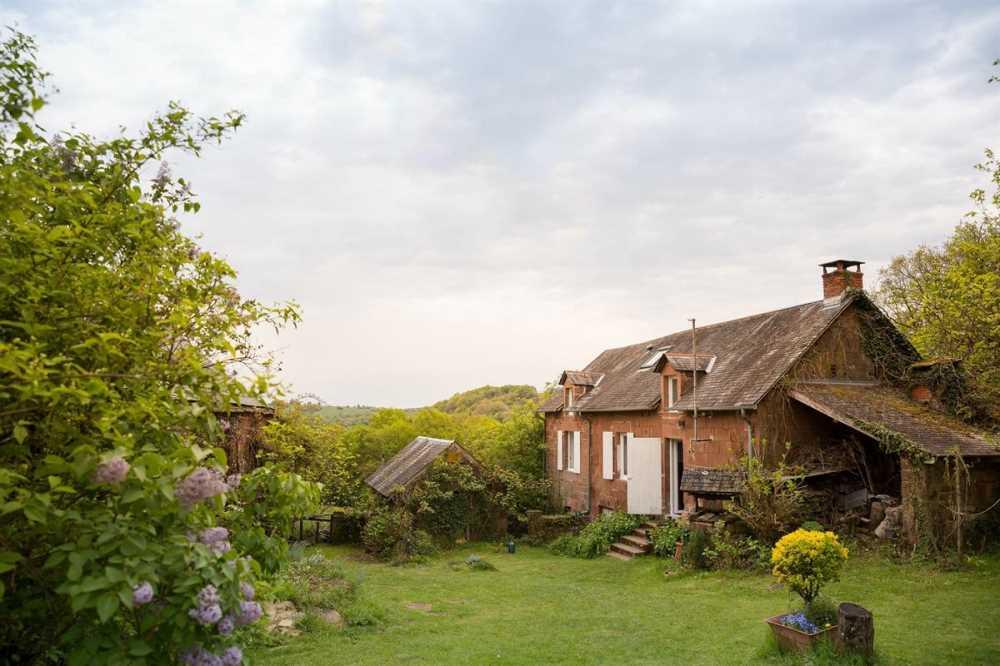Cottages, farmsteads and farmhouses: three types of country houses to enjoy all year round

Cottages, farmsteads and farmhouses are three historic snapshots of well-defined rural atmospheres, three postcards of bucolic landscapes surrounded by greenery, three types of country houses that we'd all like to escape to sooner or later.
What's the secret behind these houses, which every day challenge the passage of time and have in many cases become enchanting resorts and charming homes, so much so that many people feel drawn to them?
The answer lies in the connection between nature and the work of man.
The cottage, icon of the English countryside (but not only)
The cottage is the typical English country house. A characteristic element of the Anglo-Saxon landscape and part of the Scandinavian and Alpine regions, it can be made of stone or wood. It is usually surrounded by a small plot of land, originally used by the farmer who lived there, and then later transformed into a courtyard/garden.
In fact, the word cottage comes from cotter, a peasant farmer. Since the Middle Ages the cottage included some typically agricultural items such as a barn and a stable, as well as a fenced courtyard. In subsequent centuries cottages were also built for other categories of workers, thus becoming an independent residence widespread in several European and American countries.
Hundreds of cottages around the world have been transformed into holiday homes or tourist accommodations, recalling the atmospheres of the past while offering all the comforts of modern life.
In accordance with the desire to preserve historical authenticity, the renovations of old cottages are best done by recovering all those characteristic elements of these structures that had been abandoned over time, such as purlins, columns and wooden joists.
Like the interiors, often the subject of a conservative restoration that includes the floors (essential for the authenticity of the building), the walls and sometimes the most striking furnishings (fireplaces, large wooden tables, stone sinks and so on), the surrounding garden becomes an element of value for the cottage, almost a certificate of recognisability.
Of course, the choice of plants and furnishings must be coordinated with the area. In Britain a cottage should be immersed in a lush English garden, which fades gently into the landscape of the humid British countryside, while at other latitudes different types of greenery will prevail.
The farmsteads of the south, from rural hamlets to charming mansions
The farmstead is a grouping of rural buildings all bound to the economy of the estate, built between 1500 and 1600 and typical of southern Italy and other Mediterranean countries (paradores in Spain, relais and chateaux in France) or in Latin America (haciendas).
The Italian version, called a masseria, comes from the word masserizie (agricultural tools, furniture, furnishings, food depots) that in the past were preserved in large stone buildings where farmers, shepherds, farmers and workers lived.
Some farmsteads owned by noble families were surrounded by defensive walls and constituted small self-sufficient hamlets that a number of families could live in.
The architectural structure of a farmstead follows the usual scheme of the farm with Mediterranean style agricultural courtyard: a single central space used as a courtyard and farmyard, surrounded by several buildings used as residences or to store tools or provide shelter to animals.
Often abandoned and left in ruins, since the 1990s much effort has been put into restoring these ancient buildings, converting them into agricultural tourism facilities and B&Bs. This has also made it possible to preserve the great traditions that these monuments represent.
Here the design of a garden requires special attention, especially with regard to water supply. Indeed, your best choices are botanical species used to a dry climate, native varieties and succulent, bulbous plants.
There must be adequate shaded areas, and if possible a small swimming pool or a water feature for guests to cool off.
The farmhouse, isolated and happy
The farmhouse escapes stringent architectural definitions and, unlike the cottage and farmstead, is not bound to a particular geographical area, but has a decisive characteristic that makes it identifiable: it always stands in isolation, in the countryside, in the hills or in the mountains. It shouldn't be confused with the dairy farm (stable with attached small building to make butter and cheese) but is very similar to a grange (agglomeration of isolated rustic buildings), particularly widespread in Tuscany.
Like cottages and farmsteads, farmhouses are often immersed in captivating, pastoral landscapes, where time seems to have stopped.
The fame of these rustic buildings has grown significantly in the last three decades as some celebrities have chosen renovated farmhouses as their refuge.
A common value: the garden
The thing that cottages, farmsteads and farmhouses have in common in the collective imagination is a close connection with the surrounding environment. Respect for the surrounding landscape and nature is an essential rule for maintaining or creating a green space. For this reason, native species and plants that adapt well to the climatic conditions of the area should always be preferred.
A good landscaper or garden designer will try to evoke the atmospheres of past times without sacrificing the comforts of the 21st century.
The garden surrounding cottages, farmsteads and farmhouses becomes an integral part of the setting and must follow the rhythms that nature suggests. Therefore, a shaded area for resting, reading and relaxing is a must, with a pergola or gazebo that doesn't detract from the architecture of the building. By making the most of the outdoor spaces the garden will be able to reach its full potential.
This new living area can be covered with climbing plants for an even more pleasant, natural effect.
Living outdoors offers some significant benefits. It's possible to enjoy greenery all year long. It takes courage, of course, but thousands of rural buildings survive far from the city. And just maybe one of them is waiting for you...
